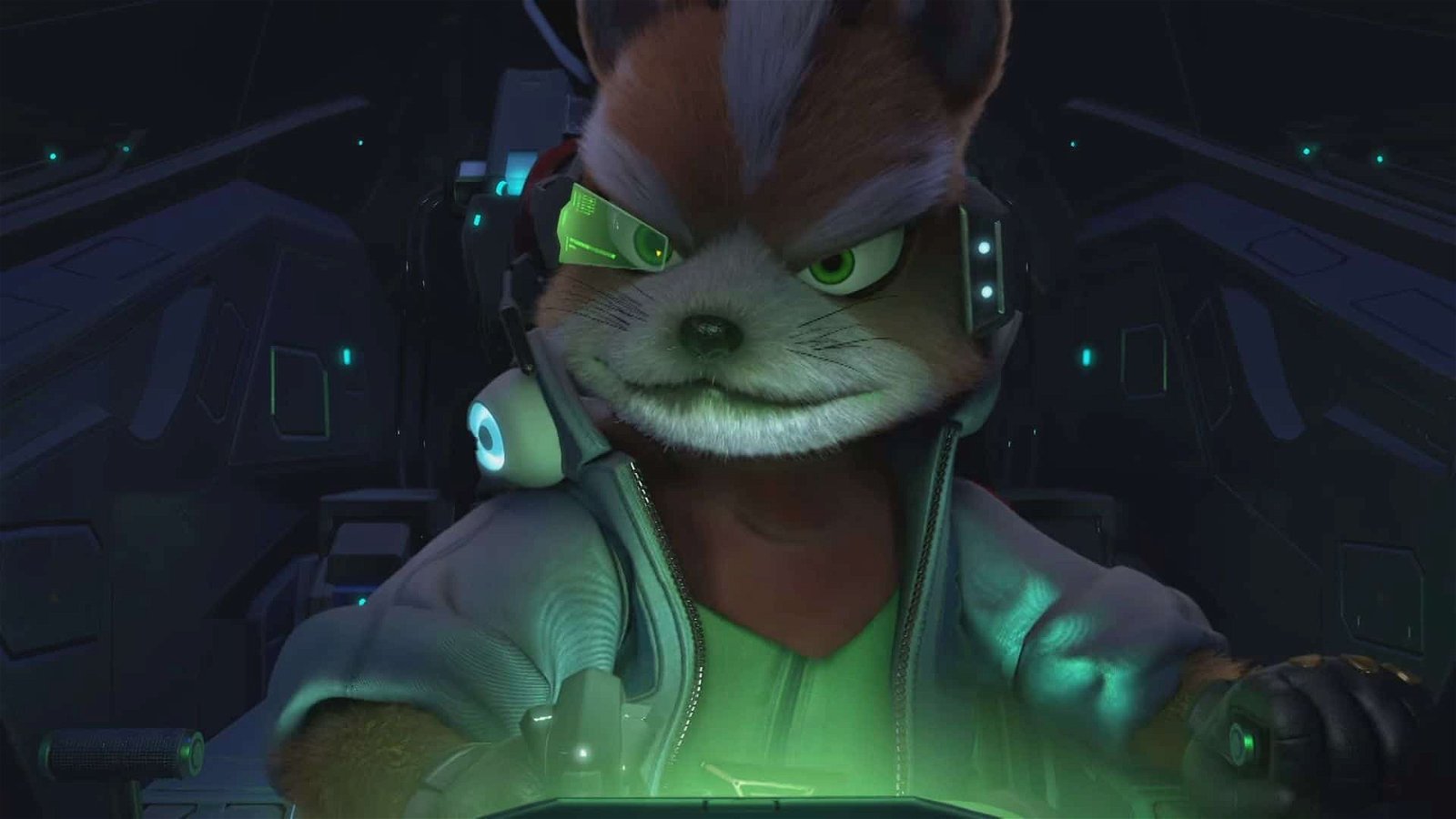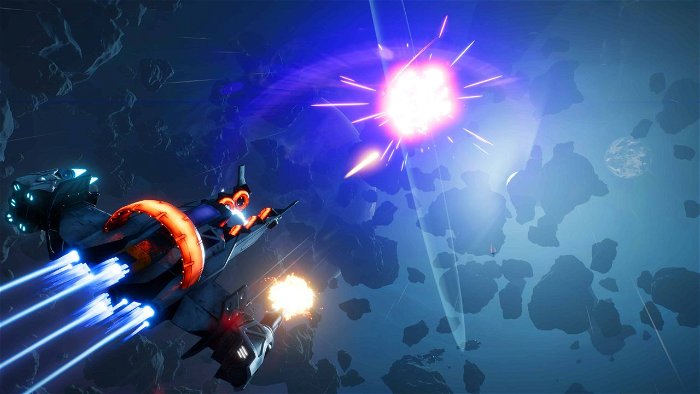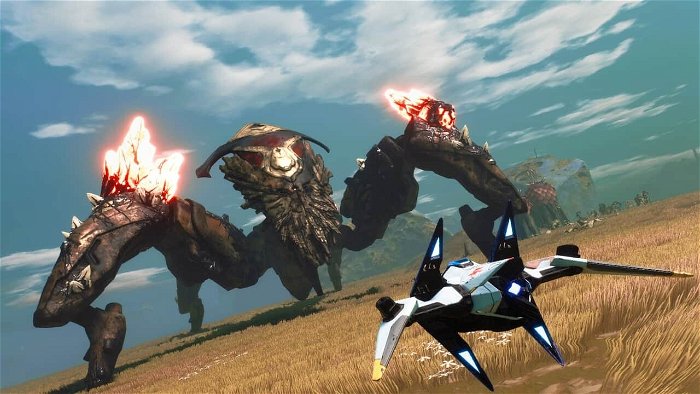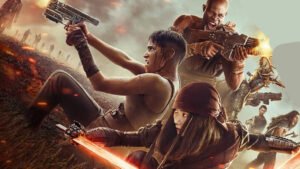Just when everyone thought the toys-to-life genre was past its prime, Ubisoft defied the industry trend and pushed forward with Starlink: Battle for Atlus.
This new franchise in the troubled genre has captured the hearts and minds of not only kids but all the top minds at Nintendo. With its innovative concepts and the way in which it draws you into an exciting universe, Starlink has proven itself a strong, innovative concept.
Sitting in Ubisoft Toronto, the birthplace of the franchise, I had a chance to talk to Matthew Rose, the producer on Starlink: Battle for Atlus. With such a unique set of talents at their disposal, the team at Ubisoft Toronto set out to make something new, and what they came up excited people young and old. As Rose explains, it was a process, but the stars aligned to make the launch more exciting than anyone could have imagined. From an innovative concept to a partnership with Nintendo, Starlink is a game that started out small but landed among the stars.
CGMagazine: How did this project get started?
Matthew Rose: I had this incredible opportunity five years ago. I still don’t know quite how I landed it, but I was given this blank slate, wide open mandate, to basically come up with something new.
You know that should be really liberating and exciting, but it was terrifying, because it’s tough to be creative when you don’t have any constraint. But I did have one big constraint, which is that I only had eight people and we had this tiny little corner and it was people from different backgrounds and different disciplines. We did all sorts of crazy prototyping for months across different technologies and different genres and we were playing with augmented reality and Kinect and all sorts of crazy things.
One of those prototypes was the idea for this kind of modular starship. It was this clunky rough prototype at first that we made but it worked. There was this real magic there and we showed it and kind of filled in all of the missing parts and got really excited about it. That really became the beginning and then something amazing happened in that, as people saw this prototype all sorts of people from the studio and even from other studios within Ubisoft started seeing it and saying, “This is something I want to be a part of. People started coming out saying, “You know what, I’ve got a background in Industrial Design, I used to do electronics, or my hobby is making toys, toy design,” and everyone started joining together to make this thing into a reality. The rest is history. It’s been an incredible journey up to this point.
CGMagazine: As the toys-to-life genre changed since you started, did you ever question the development?
Matthew Rose: The major breakthrough for us was realizing that there was a hugely underserved market. Most kid’s games nailed this formula of being “My first video game” of holding your hand and bringing you into the world of video games They’re super linear and they tend to be low challenge. They have this cartoony visual which really appeals to young kids and they bring them in and they get them excited and engaged with video games. The problem is that most kids these days are growing up completely fluent in technology, and they’re growing up with a generation of gamer parents that are playing these games with them. So by the time they’re like six, seven, eight-years-old. maybe at the top they’ve mastered those games and they’re ready for the next big challenge. What we’ve realized is that there is very little on the market that was meant for them as an audience and that’s appropriate for them as an audience and far too many of these kids were kind of stepping directly from these really young kid’s games to mature rated games that really weren’t intended for them.
That was the moment, that was the breakthrough when we said, “Okay this is a market,” and it was that opportunity that drove everything else; that opportunity that got retailers engaged and onboard. We had retailers thanking us for making something because they see this so often in their stores. So, you know that’s what we’re really excited about.
CGMagazine: Could you talk a bit about how the Starfox/Nintendo partnership came to be?
Matthew Rose: It came about after E3 2017. I had the opportunity at E3 2017 to unveil the game to the world on stage. It’s an amazing moment and all we had at that E3 was a behind-closed-door demo that we were showing to limited people.
One of the groups that came by to see the demo was a small group from Nintendo America, and we had already announced that the game was coming to the switch and so this wasn’t too strange for us. They hadn’t seen it. So, they came by to see it, and they were trying to hold their poker faces but with mixed success. At the end you could tell that they were interested and they said, “Hey do you mind if we come back with another group,” and we said, “Of course that would be great.”
They came back with another group plus a group of translators. It was the director of Mario Odyssey and the director of Mario Kart and Arms and all of these kinds of legends from Nintendo. We showed them the game and they were very interested and asked good questions and then they said, “Do you mind if we come back with another group?” And then it was the father of Metroid and the creator of Animal Crossing—you know going up the ranks—and it was an amazing experience.
Eventually, it was Reggie with his bodyguards and at that point we kind of knew something was up. Then after E3 we reached out and we started talking to Nintendo. And that culminated in us getting an invitation to go out to pitch a collaboration with Mr. Miyamoto. I had the opportunity to travel to Kyoto with Laurel Melville, our current director, and Liam our tech director and we went out there and right before we were going to do this pitch we discovered that it wasn’t only Mr. Miyamoto, it was the entire Japanese side of the Star Fox development team who are now running Nintendo Japan.
It was bar none the most amazing experience in my career. But it was obvious it went well and Liam went through this intense gauntlet of super specific game design questions from Mr. Miyamoto. But obviously he survived, and he did well and the rest is history.
CGMagazine: I quickly wanted to wrap things up by talking about Toronto and developing in this city. How do you find it and do you feel it helped make this game a reality?
Oh, it’s amazing. I grew up around Toronto, I’m from a place called Lindsay and Toronto was always the big city. I went to college here at Seneca, and Max the Mutt animation school. Then I moved to Vancouver because there was no games industry in Toronto at the time, or rather it was a small industry with limited resources. And so I moved to Vancouver and worked at some big studios there and I came back for Christmas one year and my daughter at the time was only 18 months old and my parents are here and my brothers are here.
I realized how wonderful it was to have family around to support them and so I decided to move back and Ubisoft had just started at the time, so I came to join the studio. For me, it was coming home. I’ve always been surprised that there isn’t a bigger industry here because there’s so much talent here. There are amazing schools, there is just so much acting talent and all of the support Industry that you have for film and TV and an incredible indie scene for game development and so for us, it’s been amazing. We’ve worked with so many partners, our composer Trevor Yulie, who’s the composer on Orphan Black, is here in Toronto and did an amazing job with our music.
You know all of the actors who are all here tonight, the cast of the game—the vast majority of them—are Toronto actors. Elliott Animation—right across the road from the studio—helped storyboard the cinematics and work on things… we’ve worked with so many partners in the city. This game really feels like it’s a Toronto-led project, even outside of just Ubisoft it’s been a collaboration with all sorts of partners in the city.







